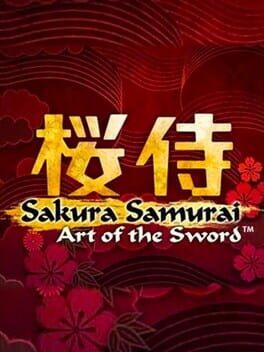In my original review for Sakura Samurai, the game symbolized, to me, how Nintendo's curation had become too loose, leading to the 3DS store having way too many low-quality games in it that weren't worth anybody's time. Fast-forward to the Switch, and the shovelware on the Switch eShop makes the one from its predecessor look like gold, so I might have been on the wrong side of history there: at least, Sakura Samurai was a finished product that offered a degree of cohesion. That's the best defense I can muster for it, though.
The game follows the eponymous Sakura Samurai, a fledgling warrior who receives the title from a Kappa they encounter one day, with the creature also tasking them with rescuing a princess, who was taken... some time... by someone...? The details are hazy: the game isn't quite clear about what happened or how many people care, and just sends you on your merry way. This handwave-y style of storytelling isn't that uncommon, with many of Nintendo's first party games, for example, having been employing it for decades. The difference is that those games have the gameplay to back it up, while Sakura Samurai...
To call the game simplistic would be generous: it has one gimmick it stretches over the course of a couple of hours, and that's it. Each stage is a sequence of stand-offs against enemies in which you can attack with the A button and dodge using B + Circle Pad. Going on the offensive is not an option: the game forces you to play passively by having enemies block all your attacks if you try to strike first. Instead, you must wait for them to attack, dodge, get a few hits in, rinse and repeat. This goes for every enemy in the game, from punchbag grunt to final boss.
It's action gameplay distilled to its most flimsy essential, too barebones to sustain a game alone. It feels nifty for the first fifteen minutes; by the first hour -- that is, entering the game's second half -- you'll have grown bored of the mechanic already. And then, in that latter half, enemy tells start becoming confusing, or worse, the same gesture is shared by different moves. The experience is somewhat padded by the existence of special moves that require you to grind a few special stages, as well as the need for money for consumables, but it never leaves that very basic framework it's built on and thus only further contributes to the feeling of repetition.
Bottom line, if you played fifteen minutes of Sakura Samurai, you've seen what it has to offer, and you might as well not do it. It's a relic from the 3DS that's not worth revisiting.
The game follows the eponymous Sakura Samurai, a fledgling warrior who receives the title from a Kappa they encounter one day, with the creature also tasking them with rescuing a princess, who was taken... some time... by someone...? The details are hazy: the game isn't quite clear about what happened or how many people care, and just sends you on your merry way. This handwave-y style of storytelling isn't that uncommon, with many of Nintendo's first party games, for example, having been employing it for decades. The difference is that those games have the gameplay to back it up, while Sakura Samurai...
To call the game simplistic would be generous: it has one gimmick it stretches over the course of a couple of hours, and that's it. Each stage is a sequence of stand-offs against enemies in which you can attack with the A button and dodge using B + Circle Pad. Going on the offensive is not an option: the game forces you to play passively by having enemies block all your attacks if you try to strike first. Instead, you must wait for them to attack, dodge, get a few hits in, rinse and repeat. This goes for every enemy in the game, from punchbag grunt to final boss.
It's action gameplay distilled to its most flimsy essential, too barebones to sustain a game alone. It feels nifty for the first fifteen minutes; by the first hour -- that is, entering the game's second half -- you'll have grown bored of the mechanic already. And then, in that latter half, enemy tells start becoming confusing, or worse, the same gesture is shared by different moves. The experience is somewhat padded by the existence of special moves that require you to grind a few special stages, as well as the need for money for consumables, but it never leaves that very basic framework it's built on and thus only further contributes to the feeling of repetition.
Bottom line, if you played fifteen minutes of Sakura Samurai, you've seen what it has to offer, and you might as well not do it. It's a relic from the 3DS that's not worth revisiting.
